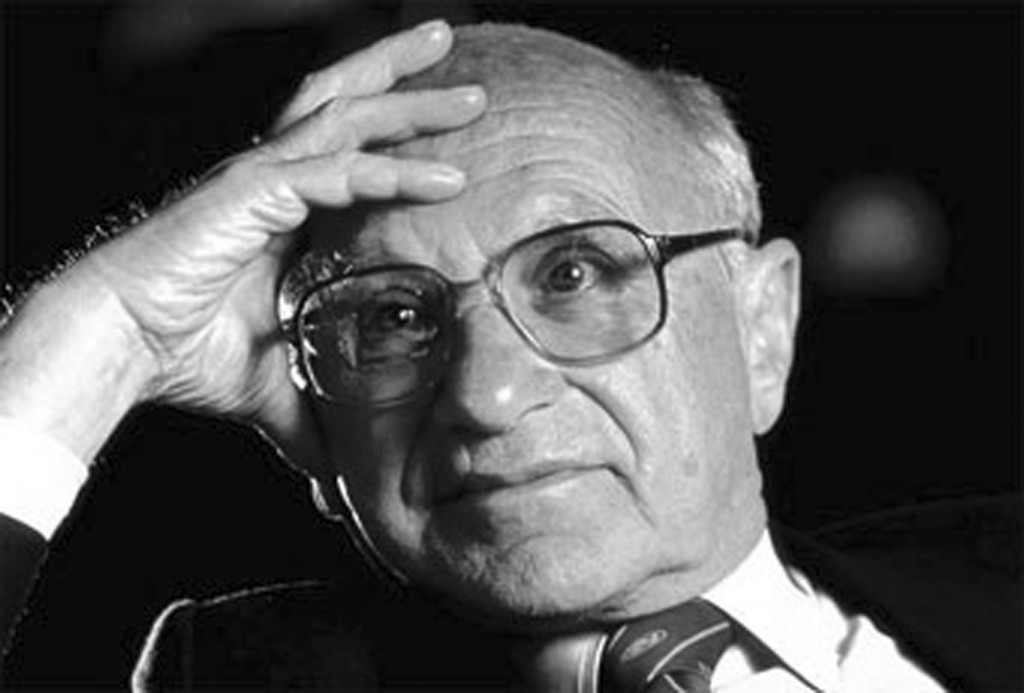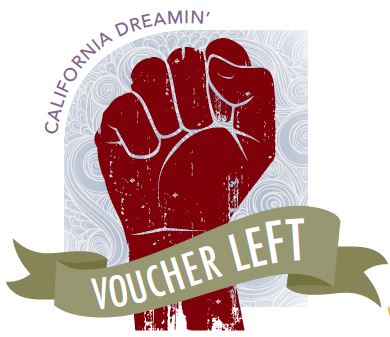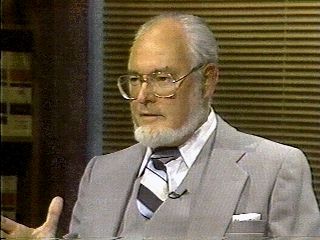
Cali libertarians counter school choice plan with pitch of their own
This is the latest installment in our series on the center-left roots of school choice, and Part III of a serial about school choice efforts in late ‘70s California. Part II included a closer look at U.S. Rep. Leo Ryan and the game-changing voucher plan he wants to push, while school boards and teachers unions came out swinging.
South of San Francisco, an electronics engineer and inventor in Redwood City read about the liberal-led California Initiative for Family Choice and thought: Disaster.
Not because it would kill the public school system. Because it would perpetuate it.
Jack Hickey saw too many regs, too little freedom, too much potential to “contaminate” private schools. He was certain the massive school choice plan engineered by Berkeley professors Jack Coons and Stephen Sugarman would curtail choice, not expand it.
“I looked at that and said, ‘That’s bad, that’s really bad,’ “ Hickey said in an interview.
Hickey wasn’t content to grump. The libertarian activist would eventually run for office 18 times, including for governor, U.S. Senate and U.S. House of Representatives. In this case, he nimbly sketched out a counter-proposal, something he called a “performance voucher.”
Then he and Roger Canfield, a police consultant in nearby San Mateo, began their own sprint to the ballot.
***
At the time of his meeting with Congressman Leo Ryan, Jack Coons was best known as one of the attorneys who changed how public schools are funded in California.
He and Stephen Sugarman were key players in a legal effort that began in 1968 with a widely publicized case, Serrano v. Priest. It charged that the way California financed public schools – by relying heavily on local property taxes, resulting in huge disparities between rich and poor districts – violated the Equal Protection Clause of the Fourteenth Amendment.
Over the course of a decade, Serrano led to three California Supreme Court rulings that spurred the state legislature to mitigate funding disparities between districts. It’s also credited with sparking school finance reform in other states, even though a ruling from a similar case in Texas was struck down in a 5-4 decision by the U.S. Supreme Court.
Coons’s embrace of school choice flowed, initially, from the funding inequities he saw. Ultimately, he and Sugarman, his protégé and intellectual partner, came to this conclusion: Giving poor parents more power to choose schools for their children best allowed them to rise above an entrenched education system blatantly rigged against them.
The professors first fleshed out their voucher idea in 1971, in a 118-page treatise for the California Law Journal. In the foreword, another Berkeley professor channeled a view about public schools that wasn’t uncommon for progressive thinkers of the era:
If a set of families enters a state park to go hiking, that group would be shocked indeed to discover that the scenic trails were reserved for its richer members and that only barren and rocky paths were held open for the poor. Nevertheless, our public schools operate in such a discriminatory way.
Not all choice enthusiasts looked primarily through that lens.
***
Like Coons and Sugarman, the libertarians wanted to end the old regime, not modify it.

Jack Hickey and Roger Canfield’s proposal would abolish government-run schools, end compulsory education and stop measuring academic progress merely by number of instructional days (wonks call that “seat time.”) Every parent would be given a voucher of equal value, $2,000 per year. (Per-pupil spending in California at the time was about $3,000 per year.) Through a contract with the state, the parents could spend the money on a school, on a teacher or teachers, on educational materials, or on any number of other things and combinations.
The performance voucher had, in the words of Hickey and Canfield, “divisibility.” In that respect, they, like Coons and Sugarman, foreshadowed today’s latest spin on vouchers – education savings accounts – years before think tanks fleshed them out.
But the performance voucher also had another irregular feature that made it distinct: It couldn’t be redeemed until the student showed progress, as determined by a standardized test.
No progress. No payment.
Like the Berkeley professors, Hickey and Canfield saw their proposal empowering parents and teachers, fostering competition and reducing bureaucracy – but, in their view, in a simpler, more direct way that wouldn’t produce new reams of red tape. They thought their plan would withstand legal challenges on church-state grounds. They also wrote, pointedly, that it was “not designed to redress social ills.”
Feisty and intense, Hickey jumped into the ballot effort with both feet. It wasn’t long before he was putting in a call to a certain Nobel-Prize-winning economics professor.
***
Jack Coons was the yin to Milton Friedman’s yang. His case hinged on morality, not markets.
In his view, a revamped public education system with vastly expanded choice wouldn’t just open the door to better academic outcomes for students. For parents, it would beget responsibility, legitimacy, dignity. Coons reasoned that once poor parents had the power to routinely do what more affluent parents take for granted – to make that most important of decisions, how best to educate their children – other, monumentally good things would follow.
The future anchor of the Voucher Left grew up in Minnesota, the son of a traveling kerosene stove salesman. Before law school, he had worked as a truck driver, served as an officer in the U.S. Army, and played linebacker for the University of Minnesota at Duluth. In college, the same guy who liked to lay the big lick on halfbacks also sang lead in a jazz band.
Education policy came by way of serendipity. As a law professor at Northwestern in 1962, Coons was hired by the U.S. Commission on Civil Rights to report on racial segregation in Chicago public schools. The professor it wanted to hire was too busy.
From there, Coons rose to rub shoulders with some of the most iconic figures of the times. In the 1960s, he hosted a radio show in Chicago, where Friedman was a frequent guest, and he discussed the legal implications of boycotts with Martin Luther King Jr. In the early ‘70s, he rode with Daniel Patrick Moynihan, from Urbana to Chicago, in a blizzard; bar stops were frequent. Coons and Sugarman also had enough academic heft to enlist legendary education researcher James Coleman into writing the foreword to two of their books, including 1978’s “Education by Choice.”
For Coons, this wasn’t academic. His easy smile and gentle demeanor belied a militant’s passion. He recoiled at the injustice of education in America every bit as much as other activists were horrified by racism or Vietnam.
In the middle of the ballot effort in 1979, Coons paused to duel with a voucher critic, R. Freeman Butts, in the pages of Phi Delta Kappan. He noted the tragic disparities in public schools between Beverly Hills and Watts, then lowered his shoulder:
And that is what Professor Butts calls public education. It is a play on words, a corruption of our language; for public is the one thing such a system is not. It was and remains a profoundly elitist, exclusive, and undemocratic structure of privilege paid for by taxation – one in which the rich get choice and deductions, and the poor get sent.
***
Vouchers weren’t the only thing on Congressman Leo Ryan’s mind.
In the summer of 1977, Jonestown, Guyana had become the new headquarters for the People’s Temple, formerly based in San Francisco. Jim Jones, the temple’s charismatic leader, bought the land in the jungles of South America in 1973, not long after the first negative media reports about his cult surfaced. Four years later, as scrutiny mounted, Jones fled to his new sanctuary, bringing hundreds of temple members with him.
Back in the Bay area, negative stories kept piling up.
In 1977, Ryan heard from a friend, a guy he met when he was a high school teacher. The man’s son had been a member of the People’s Temple, but was found dead, his body mutilated, not long after he talked of leaving. Ryan began investigating. He heard from other constituents worried about family members. They shared stories of abuse. They said people were being held against their will.
Ryan went to the State Department, but officials there were not helpful.
Jim Jones had cultivated friends in high places. He helped George Moscone became mayor of San Francisco. He met several times with Vice President Walter Mondale. At a dinner honoring him in 1976, California Gov. Jerry Brown was among those in attendance. Despite the evidence, political allies continued to defend him. After a damning San Francisco Chronicle story in February 1978, Harvey Milk, the openly gay city supervisor who would be assassinated a few months later, fired a letter to President Carter. Temple defectors, he wrote, were spreading lies about “a man of the highest character.”
Ryan decided to see for himself.
He chaired a congressional subcommittee with jurisdiction over Americans abroad. He asked other Bay area congressmen to go with him. All declined.
Undeterred, Ryan announced on Nov. 1, 1978 that he was going to Jonestown.
On Nov. 14, 1978, he arrived.
Stay tuned for Part IV of “California Dreamin’” next week.
Full disclosure: The author is employed by Step Up For Students, a nonprofit which hosts this blog and helps administer two educational choice programs: Florida’s tax credit scholarship program, the largest private school choice program in America, and Florida’s Personal Learning Scholarship Accounts program, its education savings account for students with special needs.



Roger Canfield and I were both Republicans at the time. Roger ran for California’s 11th Congressional seat in the special election following Leo Ryan’s death. In 1984, I was the Republican candidate for that same seat(then held by Tom Lantos). I received 59625 votes(28%) on a budget less than $5,000.
Jack, thanks for the clarification. And thanks for taking time out to talk with me about what happened in California in the late 1970s. I am grateful.